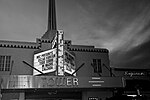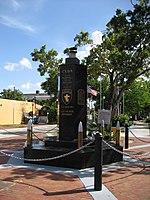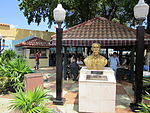Bay of Pigs Museum
1988 establishments in FloridaCuba–United States military relationsFlorida museum stubsMiami building and structure stubsMuseums established in 1988 ... and 2 more
Museums in MiamiUse mdy dates from August 2021

The Bay of Pigs Museum, also known as the Brigade 2506 Museum and Library, is the official museum in memory of the Bay of Pigs Invasion's Brigade 2506 in Little Havana, Miami, Florida.
Excerpt from the Wikipedia article Bay of Pigs Museum (License: CC BY-SA 3.0, Authors, Images).Bay of Pigs Museum
Southwest 9th Street, Miami
Geographical coordinates (GPS) Address Website External links Nearby Places Show on map
Geographical coordinates (GPS)
| Latitude | Longitude |
|---|---|
| N 25.764989 ° | E -80.225059 ° |
Address
Bay of Pigs Museum
Southwest 9th Street 1821
33135 Miami
Florida, United States
Open on Google Maps






